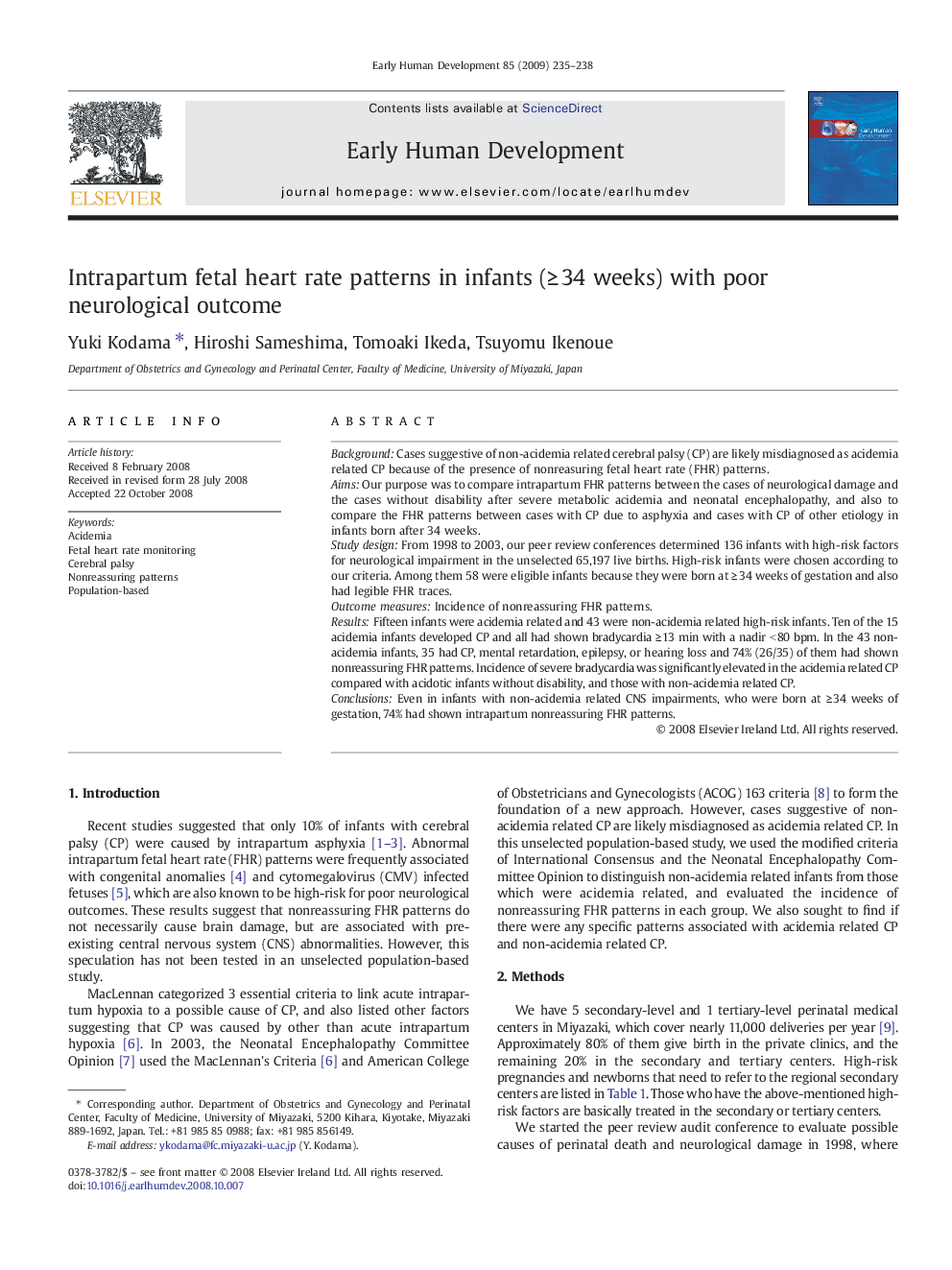| Article ID | Journal | Published Year | Pages | File Type |
|---|---|---|---|---|
| 3917748 | Early Human Development | 2009 | 4 Pages |
BackgroundCases suggestive of non-acidemia related cerebral palsy (CP) are likely misdiagnosed as acidemia related CP because of the presence of nonreasuring fetal heart rate (FHR) patterns.AimsOur purpose was to compare intrapartum FHR patterns between the cases of neurological damage and the cases without disability after severe metabolic acidemia and neonatal encephalopathy, and also to compare the FHR patterns between cases with CP due to asphyxia and cases with CP of other etiology in infants born after 34 weeks.Study designFrom 1998 to 2003, our peer review conferences determined 136 infants with high-risk factors for neurological impairment in the unselected 65,197 live births. High-risk infants were chosen according to our criteria. Among them 58 were eligible infants because they were born at ≥ 34 weeks of gestation and also had legible FHR traces.Outcome measuresIncidence of nonreassuring FHR patterns.ResultsFifteen infants were acidemia related and 43 were non-acidemia related high-risk infants. Ten of the 15 acidemia infants developed CP and all had shown bradycardia ≥ 13 min with a nadir < 80 bpm. In the 43 non-acidemia infants, 35 had CP, mental retardation, epilepsy, or hearing loss and 74% (26/35) of them had shown nonreassuring FHR patterns. Incidence of severe bradycardia was significantly elevated in the acidemia related CP compared with acidotic infants without disability, and those with non-acidemia related CP.ConclusionsEven in infants with non-acidemia related CNS impairments, who were born at ≥ 34 weeks of gestation, 74% had shown intrapartum nonreassuring FHR patterns.
